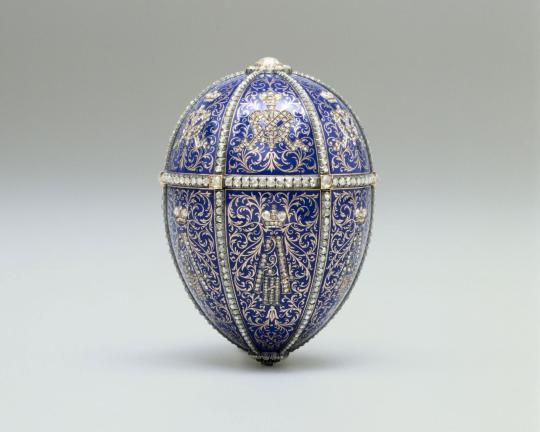#object d’art
Explore tagged Tumblr posts
Text

Natural History Museum, Vienna
18th century Gemstone and Exotic Shell bouquet. Frankfurt, Germany, and Vienna. Circa 1760.
#country house#interior#higginsandcole#jewelry#jewels#Jewel#gem#gemstone#crystal gems#shells#flowers#bouquet#art#object d’art
102 notes
·
View notes
Text
Beautiful object d’art

13 notes
·
View notes
Text


Forged silver ring with chrysocolla gemstone. It’s about size 8.
#metalsmithing#silver#silversmithing#craft#sterling silver#chrysocolla#gemstone#sterling#art#silversmith#metalsmith#art jewelry#ring#silver ring#jewelry#green stone#stone#crystal#semi precious stones#fine metals#silver jewelry#handmade#handmade objects#objets d’art#objet d’art
2 notes
·
View notes
Text
some words for worldbuilding (pt. 1)
Air
billow, breath, bubble, draft, effervescence, fumes, puff, vapor
Arena
aquarium, bazaar, coliseum, field, hall, mecca, stage
Building
abbey, architecture, armory, asylum, bakery, bar, booth, cathedral, club, construction, court, department store, dock, edifice, emergency room, factory, food court, fort/fortress, framework, garrison, greasy spoon, hacienda, hangout, headquarters, hotel, inn, institute/institution, jetty, laboratory, mansion, mental hospital, monastery, mosque, museum, nursing home, office, pavilion, penitentiary, plant, prison, rampart, repository, ruins, sanctuary, shrine, skyscraper, stockade, storeroom, structure, temple, theater/theatre, treasury, warehouse, wharf
City
capital, metropolis, town, village
Furniture
altar, banister, bench, booth, bunk, cabinet, chair, couch, crib, davenport, dresser, furnishings, futon, jetty, lectern, partition, perch, platform, pulpit, rail/railing, screen, secretary, stand, wardrobe
Geographic division
area, county, desert, dynasty, kingdom, outskirts, quarter, sector, suburb, territory, tract, zone
Habitat
abode, ecosystem, environmentalist, habitat/habitation, harbor, home, land, nest, paradise, premises, refuge, settlement, tent
Habitat, human: accommodations, apartment, barracks, cabin, castle, condominium, convent, domesticity, dungeon, element, encampment, estate, grange, hacienda, home, house, housing, hut, jail, lodging, madhouse, monastery, neighborhood, old country, palace, prison, reservation, resort, sanctuary, shanty, suite, vacancy, villa
Habitat, rural: barn, burrow, conservatory, desert, farm, forest, grange, jungle, sanctuary, wilderness/wilds, wood/woods
Land
abyss, avalanche, bank, bay, bed, bluff, campus, cape, cavern, cliff, compost, cove, crevice/crevasse, dirt, downgrade, dune, elevation, estuary, expanse, field, fossil, garden, glacier, gorge, green, ground, gulf, harbor, hillock, inlet, knoll, landscape, lawn, lot, marshy, menagerie, mine, moat, mound, mountainous, nature, outlook, park, patio, pit, plateau, plaza, porch, prairie, projection, property, quagmire, ravine, ridge, savanna, shelf, soil, stack, table, trench, tundra, valley, well, wood/woods, yard
Nation
country, home, land, nationality, soil, state
Personal item
adornment, amulet, beads, best-seller, briefcase, cache, cargo, charm, contraceptive, disguise, effects, equipment, favorite, gem, glasses, handbag, jewelry, knickknack, luggage, marionette, memorabilia, necklace, novelty, object d’art, odds-on-favorite, paraphernalia, pledge, possession, pride, puppet, purse, resources, ring, souvenir, stuff, supplies, sustenance, thing/things, trappings, trifle, valuable
Planet
cosmos, Earth, galaxy, moon, planet, sphere, world
Region
capital, commonwealth, quarter, region, settlement, suburb
Room
alcove, attic, bath, bedroom, boutique, cellar, den, enclosure, foyer, gin mill, hall, lavatory, loft, outhouse, parlor, restaurant, saloon, shop, stage, store, tenement, theater/theatre, vestibule
Shape
angular, beaten, billowy, checkered, concave, conical/conic, crescent, curly, deformed, elliptical, flat, gnarled, kinky, misshapen, obtuse, round, shapeless, spiral, straight
Vehicle
camper, conveyance, motorcade, transport
Vehicle, air: aircraft, armada, blimp, dirigible, helicopter, shuttle, UFO
Vehicle, land: ambulance, bicycle, car, cherry-picker, dolly, excavator, model, traffic, truck
Vehicle, water: armada, boat, craft, fleet, sailboat, yacht
Water
abyss, aqueduct, basin, beach, blackball, brook, cape, channel, condensation, creek, deep, estuary, fountain, gulf, heading, inlet, lake, oasis, pond, promontory, reservoir, sea, spray, strait, tide, wash, wave, whirlpool
NOTE
The above are concepts classified according to subject and usage. It not only helps writers and thinkers to organize their ideas but leads them from those very ideas to the words that can best express them.
It was, in part, created to turn an idea into a specific word. By linking together the main entries that share similar concepts, the index makes possible creative semantic connections between words in our language, stimulating thought and broadening vocabulary. Writing Resources PDFs
Source ⚜ Writing Basics & Refreshers ⚜ On Vocabulary
#worldbuilding#vocabulary#langblr#writeblr#writing reference#spilled ink#creative writing#dark academia#setting#writers on tumblr#poets on tumblr#poetry#literature#writing tips#writing prompt#writing#words#lit#studyblr#fiction#light academia#writing resources
2K notes
·
View notes
Text
new favourite perfume is a mini I got at the grocery store for 1€ called “trespassing lady: night edition”. It smells terrible and they cast the letters on the bottle backwards. It is more precious to me than gold
#REAL TIME trespassing lady (night edition)#also found a nice one at the second hand store but literally doesn’t matter in the face of this Thing. this Object D’Art
0 notes
Text


One of my best friends made me this absolutely unhinged object d’art- a felted representation of my garbage cat eating plastic and I don’t think I’ve ever seen something more beautiful.
351 notes
·
View notes
Photo



“Between 1885 and 1916, the jeweller Peter Carl Fabergé made fifty eggs for the Imperial family, taking the concept of the humble Easter egg and revamping it into a spectacular and bejewelled object d’art- an artefact, essentially useless, but so ostentatiously eye-catching, that it could only be conceived of for a king.”
493 notes
·
View notes
Text
Next week a Formentera, I'll participate at Tardor D'Art festival with a flaneur workshop, with hand printing objects.
Próxima semana en Formentera participó en el festival Tardor d'Art con un taller flaneur, con estampación manual de objetos.
#marcos vidal#art#marcosvidal#arte#spain#artists on tumblr#contemporaryart#marcosvidalfont#formentera#flaneurismo#flaneur#workshop#balearicislands#balearic islands#Tardordart
28 notes
·
View notes
Note
GAH!!! I’ve had this question on my mind for so long, but do the boys have any particular tastes when it comes to interior design? Minimal, eclectic, etc… whatever boys you want to choose! Thank you!!!
This was interesting, I had to go on a bit of adventure through interior décor styles because I’m not too familiar with all the terms, but I definitely had fun~
Forgive any misuse of interior design words below, I am not an expert! XD
(Featuring many images stolen from Google)
Sans (Undertale): Sort of a revival post-modernist, not quite as loud as the original post-modern look in terms of colors, but still a mix-and-match of shapes and materials, spacious areas, not afraid of décor or accenting a space with unique pieces that don’t perfectly coordinate with the others. Comfort and space over rigid adherence to an aesthetic.

Papyrus (Undertale): Memphis style designs really capture his imagination, lots of shapes and bold, bright colors, circles and checkerboards and zig-zags. It’s fun, he likes fun things! Abstractly-shaped furniture and weird objets d’art—could use some more stuff with cool flame-patterns, or maybe some spikes here and there, but he can experiment to get the right balance in there!

Sky (Underswap Sans): Into modern styles, mostly, he does like the minimalist look but absolutely goes in for strategic splashes of color to brighten things up. Sleek shapes and clean lines are great, but absolutely must be offset by some rich lively colors for an open, welcome feel, can’t let it feel too sterile.

Paps (Underswap Papyrus): Favors sort of a regence look, tends toward curving lines and intricate elegance in the little details. Chair arms that swirl, fleurs in the carving of a cabinet, decorative patterns and motifs to tie everything together as a cohesive whole. He finds the charming elegance comfortable and easy to settle into.

Jasper (Underfell Sans): Definitely more of an artisan/arts and crafts style kind of guy, cares less about the Look of things than he does the craftsmanship of it—he wants things to be well-made and able to stand up to consistent use, so most of what he favors are sturdy pieces and designs without ostentation or elaborate details. It may not be the prettiest, but it is homey and comfortable and ready to be actually lived in.

Pyre (Underfell Papyrus): Empire style, he is all about the ostentation and elaborate details, silk and velvet, ebony and gold, it has to be bold and artful and dramatic (just like he is). If something’s a little too plain and simple, he’ll pass on it or find a way to dress it up prettier.

Mal (Swapfell Sans): Contemporary design is more his thing, sleek lines and sharp angles, with a strong aesthetic preference for more industrial materials (glass, metal, marble, etc). Tends to avoid most color, sticking with black and white, and just a few decorative objects here and there to draw the eye. He likes the clean look over a more comfortable, lived-in one.

Rus (Swapfell Papyrus): Big fan of art nouveau, swirling lines and curving forms. Stained glass lamps, art, and windows are big hit with him, as well as wrought iron railings or table frames and the like. He likes colors and things that feel like they flow, mostly, and any intricate detail-work that catches the eye.

Slate (Horrortale Sans): Cottage style is more his speed, a little rustic and a lot cozy, with a special emphasis on plush furniture. He’s all about the comfort and the homey feel, nothing pristine that an accident or a bit of wear-and-tear will ruin quickly.

Papy (Horrortale Papyrus): More of an English country sort of guy, big on patterns and florals, but also into a bit of delicacy and charm—some more ornate accent chairs here, decorative curtains there, unique antiques and plants everywhere. Definitely cozy and comfortable but done in a very thoughtful and deliberate way.

Ash (Undergloom Sans): Clutterbitch—wait no, I mean maximalist. He likes having a lot of stuff and putting it on display, and bright colors (especially turquoise!) make him happy to look at, so he’s drawn to that kind of thing when customizing a space. Lots of knickknacks and prints related to his hobbies, maybe a novelty end table or two, shaped like a record or a cloud or something. A bit chaotic but he probably knows where everything in it is, so ¯\_(ツ)_/¯

Yrus (Undergloom Papyrus): He goes for a bit of a modern farmhouse look, soft neutrals with warmer rustic touches. Likely to spruce it up a little further with some bright yellows and greens, but mostly in the accents—flowers, artwork, et cetera. Also likely to decorate with lots of candles and mason jars and anything he comes back with from the home goods store, because he is very passionate about the home goods store.

Brick (Horrorfell Sans): Tends toward Tuscan style, warm tones, wood and tile and wrought iron, sturdy and well-crafted furniture. Not opposed to some intricate designs here and there, but not that intricate, just enough to look a little nice. Maybe a bit nicer than the absolute basics, but he’s not trying to impress anybody, he just wants cozy and comfortable, and maybe he’s earned the right to a tiny bit of fance here and there, y’know?

King (Horrorfell Papyrus): Something of a traditionalist, with a strong appreciation for clean, elegant, and cohesive styles. The classics never go out of fashion—dark wood, damask patterns, ornate detailing, maybe some fine red drapery and a chandelier or two, but nothing too ostentatious. Less is more, but no need to go full minimalist to show your class, after all.

Merc (Horrorswap Sans): Definitely about the shabby chic, clean and simplistic styles but with a touch of wear or softness to keep it inviting. Not a sterile space that can’t be lived in, but still a bit neat and thoughtfully arranged!

Ell (Horrorswap Papyrus): More a fan of the urban look, exposed brick and beams but some softening elements incorporated too, like abstractly shaped furniture and décor, and lots of lighting. More minimalist than cluttered and probably not a huge fan of rugs, but he definitely wants a good balance between hard and rough, and soft and wavy aesthetics.

Pitch (Horrorswapfell Sans): He can’t actually see it, but tends to favor Mediterranean styles. He likes a lot of sunlight, open floor plans, and wide doorways, and he’s a little less picky about his furniture but anything with ornate designs and detailing that he can physically feel to appreciate is a bonus. Function over form, though, comfort and utility is always foremost in his consideration.

Nemo (Horrorswapfell Papyrus): Fond of mission style, slatted wooden furniture, simple and clean designs and only a couple accent colors that work well with them—autumnals are a favorite. Some nature-inspired touches like plants, artwork, and other accents to bring a little of the outdoors in, but not so much as to be cluttered.

Sunny (Gastertale Sans): Mid-century modern, for the most part, uniquely shaped items to stand as conversation pieces, but still primarily designed for utility. A little off-beat and retro, but still a homey and comfortable place to chill in.

Aster (Gastertale Papyrus): Big into art deco, metal and glass, geometric patterns and angular designs with bold, rich colors. He finds it to have a very fun and classy feel and likes things that make a statement—so he’s likely to incorporate a lot of centerpieces and décor wherever he can to draw the eye.

Spectr (Transcendtale Sans): Full-on industrial, brick and metal and hardwood, ideally with open and lofted spaces. It’s kind of what he’s gotten used to and gained an appreciation for along the way, so it may not be the most innately homey-feeling place, but he’s comfortable in it. Likely to accent the space with art—wall or sculpture—rather than rugs or blankets.

PapAIrus (Transcendtale Papyrus): He’s a minimalist. He doesn’t actually have a physical body most of the time, so his taste in decorating a space tends to prioritize aesthetic over what it would be like to actually live in it. Still, he is fond of aesthetics so he’s sure to pick out at least a few interesting and attractive centerpieces—light fixtures, table décor, an accent pillow, something—to make it a little prettier.

Xanth (Ascendswap Sans): Sort of an eclectic/boho thing going on, lots of color and design and pretty much anything fun that catches his eye-socket. He’s very into crystals and wall hangings and art (or plants!) that can be strung up to dangle from the ceiling, so any space he’s involved in decorating is bound to look a little messy, but it’s comfortable and fun so it works out in the end!

Piper (Ascendswap Papyrus): Give him that Hollywood glam, glossy high-shine surfaces—glass, gold, mirrors—mixed with soft velvets and satins. Mostly black and white but with a prominent accent color or two to really make the eleganza pop, he’s decorating to impress and show off his taste in design.

Carmine (Underfell Fruition Sans): Ends up falling into a bit of a steampunk style in terms of décor, lots of metal and lighting, plenty of stuffed shelves, and clockwork junk and tools lying around. He certainly has nothing against brass and leather either so y’know, if that’s what you wanna call it, there it is.

Tank (Underfell Fruition Papyrus): Country house design is more his speed, very fond of gingham and natural light and an overall homey feel. It’s not what he’s used to, per se, but that’s kind of…better. He likes light and open spaces, big tables for activities and soft furniture for sitting, but nothing so clean and new that it doesn’t feel like it’s meant to be used.

Vi (Swapfell Fruition Sans): International/modernist is mostly what he goes for, emphasis on steel and glass and concrete, and sharp minimalist lines. If he’s going to splurge on any patterns or color, it’ll only be in a few select pieces, nothing too outrageous.

Hunter (Swapfell Fruition Papyrus): He prefers a bit of a rustic look to things, with a high preference for natural materials, like stone and wood. Lofts are cool, as are sturdy shelving and exposed beams, but he’s especially into a good view, so if there’s high windows or just a lot of them, he’ll be happy.

Kohl (Descendtale Sans): Tends toward a dark romance style, deep rich (but of course, dark) colors, soft lighting, and graceful, sometimes ornate lines. Not one to overclutter with décor and accents, mostly simplistic, but a few items here and there—quilts and dried flowers and overstuffed pillows.

Bram (Descendtale Papyrus): Whimsigoth, a fondness for the ornate and intricate and elegant, but a tendency towards eclectic amounts of décor—wall hangings, candles, bones, and books all artfully arranged. Very into patterned furniture with texture, from the pattern being either pressed or stitched into the fabric. A little messy at first glance but he’s actually very deliberate with his arrangements for the most balanced look.

#anonymous#headcanons#undertale#underswap#underfell#swapfell/fellswap#horrortale#undergloom#horrorfell#horrorswap#horrorswapfell#gastertale#transcendtale#ascendswap#underfell fruition#swapfell fruition#descendtale
73 notes
·
View notes
Text

Dame Rosalind Savill
Director of the Wallace Collection museum in London from 1992 to 2011 and a specialist on 18th-century Sèvres porcelain
When, in 1992, Rosalind Savill announced that she was going to apply for the directorship of the Wallace Collection museum in London, reactions divided roughly in two. One group would smile wistfully and say how much they loved the Wallace, because no one ever went there. The second group would point out that Savill, who has died aged 73 of cancer, was variously unqualified for the job. “You’ve been here too long, you’re a woman and you have an illegitimate child,” was the terse summing up of one senior colleague.
This reflected the world of curating as it was 30 years ago. Savill had cut her professional teeth at the Victoria and Albert Museum in the early 1970s. The V&A, then, was modelled on the hierarchical lines of the British army.
Officers – keepers and assistant keepers – occupied the upper floors, and were treated as gentlemen, which, in terms of gender, most were. Museum assistants, in charge of cleaning, labelling and photographing objects, were relegated to the lower floors. Rising through the ranks was almost unheard of. Savill was a museum assistant in the ceramics department, remaining so when she moved to the Wallace Collection in 1974.
That she had done her degree at Leeds University, rather than Oxbridge or the Courtauld Institute, did her no favours. This made her appointment, in 1978, as assistant to the Wallace’s then director – in effect, one of its two assistant directors – extraordinary.
There was little in the museum’s recent history to suggest social innovation. Housed in the 18th-century mansion of the marquesses of Hertford in Manchester Square, off Oxford Street, its collection had been left to the nation by the widow of Sir Richard Wallace in 1897.
It was particularly strong in the art of the French ancien régime. Conditions of the bequest forbade lending works, or adding to them. In the three-quarters of a century since its opening to the public, the Wallace had gained a reputation as a museological Brigadoon.
Savill’s rise was fuelled by her work on the collection’s holding of Sèvres porcelain, among the finest in the world. As a scholarly resource, though, it had been underused.
The archive of the Manufacture National de Sèvres, owned by the French government, was exhaustive. However, as most of the factory’s historical output had gone abroad after the revolution, it had not been rigorously researched.
Savill set about doing this, focusing particularly on the objects owned by the Wallace. This resulted in her magisterial, three-volume The Wallace Collection: Catalogue of Sèvres Porcelain, published in 1988. “It weighed 12 pounds and was produced in April,” Savill recalled. “In December, I had my daughter, who weighed 9 pounds 9 ounces.”
By then, she was also the Wallace’s curator of 18th-century French porcelain. When she became the collection’s director, she took over what had long been seen as a hidden gem, known mostly to fans of the French 18th century. Savill found this annoying. Her vision was of the museum as opera, enjoyable by all visitors even if they did not know the language of the libretto.
Eighteenth-century French taste was defined by sumptuousness. Adept at winning funding – she once approached Dustin Hoffman for a donation, on the grounds that the Wallace owned a Gainsborough called Mrs Robinson – Savill set about stripping the dowdy coverings from the collection’s walls, replacing them with silks specially woven in Lyon.
The museum, in 1992, was hung as a picture gallery, although arguably its greatest treasures were its furniture and objets d’art. Where its collection of Marie Antoinette’s Versailles furniture had been scattered among top-lit rooms hung with paintings of picnicking aristocrats – “They had nothing to do with Marie Antoinette,” Savill sniffed – the queen’s armoires and secretaires were now brought together in a smaller room more suited to their original role.
The gallery housing the gloomy furniture of André-Charles Boulle was rehung in emerald-green silk. “We wanted to give it life,” Savill told the New York Times in 2008. “You can’t do that in a namby-pamby way.” By the time she left the collection, she was, in the words of Sir Timothy Clifford, ex-head of the National Galleries of Scotland, “the most distinguished woman museum director not just of this country, but the western world”.
In particular, Savill had been fascinated by the porcelain commissioned by Louis XV’s mistress, Madame de Pompadour, the Sèvres pottery’s greatest patron. Pompadour had been good to her. In 1976, when a lowly museum assistant, Savill had been asked by the Duke of Buccleuch to look at two pieces decorated with “funny blue flowers”. “I knew instantly they were pot-pourri vases bought by Madame de Pompadour in 1759,” she recalled. This discovery brought her fame in the ceramics world, assisting her curatorial ascent.
In 2022, she published the two-volume Everyday Rococo: Madame de Pompadour and Sèvres Porcelain, tracing her subject’s collection year by year from her first purchases in 1747 to her death in 1764. Savill’s sense of affinity with the marquise as a woman both ambitious and humane was clear. Commonly seen as manipulative and spendthrift, the Pompadour who emerges in Everyday Rococo is unexpectedly frugal and frail. “As she was getting ill in the last years,” Savill noted, “she bought more chamber pots [and] eye baths … [and] furnished her dining table with Sèvres seconds.”
This stripping away of grandeur also marked Savill’s own two-decade directorship of the Wallace Collection. The taste for extravagance was shown as a living thing, appreciated not least by the fashion designer Vivienne Westwood. Even before Savill’s directorship, Westwood had collaborated with her, modelling her 1990 spring collection on a cup and saucer identified by Savill as Sèvres. When Westwood reproduced one of the Wallace’s Boulle mirrors on a frock without asking permission, Savill wrote to her, gently pointing out that she was in breach of copyright. “Although Vivienne had broken our rules, I loved her for it,” she recalled. Westwood repaid her debt by selling her Boucher corsets in the museum’s shop.
Savill also gave the painter Lucian Freud a small show at the gallery in 2004, although she politely turned down his request to paint her in the nude. Her “cherished notion” that the works in the collection could be appreciated by anyone extended to schoolchildren, pupils at a local primary school being invited to curate a show called Shhh … It’s a Secret! at the Wallace in 2010.
Born in Lyndhurst, Hampshire, to Guy Savill, a consultant physician, and Lorna (nee Williams), a physiotherapist, Ros was a boarder at Wycombe Abbey school in Buckinghamshire before spending a year at a school in Switzerland, perfecting her French. A year after graduating from Leeds, she was in her first post at the V&A.
After her retirement in 2011, Savill took on a number of honorary posts, notably at Waddesdon Manor and, at the request of Queen Elizabeth II, at the Royal Collection Trust. (Thanks to a sharp-eyed George IV, the monarch’s holdings of Sèvres is the greatest in the world.) In these, she was notable for her attention to junior staff members, fostering their confidence and encouraging them to push themselves academically.
In her spare time, Savill raised Chinese quail in the garden of her house in Camden Town, north London, calmly tucking ailing fledglings down her cleavage to keep them warm. She was made a dame in 2009.
Savill is survived by her daughter, Isabella, grandson, Edward, and brother, Hugh.
🔔 Rosalind Joy Savill, museum director and art historian, born 12 May 1951; died 27 December 2024
Daily inspiration. Discover more photos at Just for Books…?
4 notes
·
View notes
Text
For #NationalMothWeek:

Gisbert Combaz (Belgium, 1869–1941) Orchids and an Emperor Moth, 1912 Pen & black ink & watercolor, on buff paper laid down on board H 44.6 cm (17.5 in) x W 59.3 cm (23.3 in)
"This large watercolour was executed in 1912 and is signed with the artist’s late monogram. During this period Gisbert Combaz was consistently producing works with a pronounced Oriental influence, reminiscent in style of his work from before the turn of the century. The painterly style of these large-scale floral watercolours stylistically mirrors such posters of the same period as one for the exhibition in Charleroi Les art anciens du Hainaut, Salon d’art moderne, published in 1911." info via https://www.stephenongpin.com/object/791200/0/orchids-and-an-emperor-moth
#Gisbert Combaz#Belgian art#animals in art#animal holiday#european art#20th century art#moth#Emperor Moth#Lepidoptera#insect#painting#drawing#watercolor#pen and ink#orchid#orchids#1910s#National Moth Week
11 notes
·
View notes
Text







Fabulously looking Chiara Voliani, Italian sculptress and jewellery maker.
"I prefer rough stones but I go with my gut: I pick them according to shapes and colours, how I see them and imagine them becoming jewels.
Stones attract me.
I give shape to my jewels by moulding them by hand and modelling them using precious and semiprecious stones.
Each jewel is immersed in pure silver: the result is material objects yet very light, very bright, with a preciousness that is also perceived to the touch."
21 notes
·
View notes
Note
Hi! Do you have tips on describing architecture? (Art nouveau style in particular)
Writing Notes: Art Nouveau Architecture

Art Nouveau - (French for ‘new art’) style of art that flourished between about 1890 and 1910 throughout Europe and the United States.
It is characterized by its use of a long, sinuous, organic line and was employed most often in architecture, interior design, jewelry and glass design, posters, and illustration.
It was a deliberate attempt to create a new style, free of the imitative historicism that dominated much of 19th-century art and design.
About this time, the term Art Nouveau was coined in Belgium by the periodical L’Art Moderne to describe the work of the artist group Les Vingt and in Paris by S. Bing (byname of Siegfried Bing), who named his gallery L’Art Nouveau. The style was called:
Jugendstil in Germany,
Sezessionstil in Austria,
Stile Floreale (or Stile Liberty) in Italy, and
Modernismo (or Modernista) in Spain.
The distinguishing characteristic of Art Nouveau is its undulating asymmetrical line, often taking the form of:
flower stalks and buds,
vine tendrils,
insect wings, and
other delicate and sinuous natural objects;
the line may be elegant and graceful or infused with a powerfully rhythmic and whiplike force.
Characteristics of Art Nouveau
Here are a few examples of the characteristics of Art Nouveau work in the visual arts, decorative arts, and architecture.
Natural shapes: Art Nouveau work is full of biomorphic shapes—or non-geometric, organic forms—that resemble flowers, insects, and other elements of the natural world.
Ornamental lines: Art Nouveau artworks—like the Paris Metro signs—frequently incorporate curvy, sinuous lines that mimic the swirling forms of plants or stems.
Flat, decorative patterns: In paintings and graphic arts, Art Nouveau artists tended to emphasize the flatness of the medium by creating small, densely packed patterns, like William Morris’s fabrics and wallpaper patterns, and the gilded motifs in Gustav Klimt’s paintings.
Byzantine influences: Artists like Gustav Klimt, with his mosaic-like gilded paintings, and Alphonse Mucha, who often painted the subjects of his paintings like Byzantine queens, drew influence from the ornate, embellished style of Byzantine art. Decorative artist Louis Comfort Tiffany presented his first Tiffany lamps in a Byzantine-influenced chapel at the World’s Colombian Exhibition in Chicago.
IN ARCHITECTURE and the other plastic arts, the whole of the three-dimensional form becomes engulfed in the organic, linear rhythm, creating a fusion between structure and ornament. Architecture particularly shows this synthesis of ornament and structure; a liberal combination of materials—ironwork, glass, ceramic, and brickwork—was employed, for example, in the creation of unified interiors in which columns and beams became thick vines with spreading tendrils and windows became both openings for light and air and membranous outgrowths of the organic whole. This approach was directly opposed to the traditional architectural values of reason and clarity of structure.
PUBLICATIONS such as The Grammar of Ornament (1856) by British architect and theorist Owen Jones (1809–1874), advocated nature as the primary source of inspiration for a generation of artists seeking to break away from past styles. The unfolding of Art Nouveau’s flowing line may be understood as a metaphor for the freedom and release sought by its practitioners and admirers from the weight of artistic tradition and critical expectations.
AFTER 1910, Art Nouveau appeared old-fashioned and limited and was generally abandoned as a distinct decorative style. In the 1960s, however, the style was rehabilitated, in part, by major exhibitions organized at the Museum of Modern Art in New York (1959) and at the Musée National d’Art Moderne (1960), as well as by a large-scale retrospective on Beardsley held at the Victoria & Albert Museum in London in 1966. The exhibitions elevated the status of the movement, which had often been viewed by critics as a passing trend, to the level of other major Modern art movements of the late 19th century. Currents of the movement were then revitalized in Pop and Op art. In the popular domain, the flowery organic lines of Art Nouveau were revived as a new psychedelic style in fashion and in the typography used on rock and pop album covers and in commercial advertising.
Examples of Art Nouveau Style in Architecture
Sagrada Familia, Antoni Gaudí: In 1883, Antoni Gaudí took over the construction of Barcelona’s Sagrada Familia basilica when architect Francisco de Paula del Villar y Lorzano resigned from the job. Though the project is still not completely finished, you can see Gaudí’s influence in the cathedral’s facade, accented with naturalistic moldings that almost look like they’re melting.
The Old England Building, Brussels, Belgium: Designed by architect Paul Saintenoy, the Old England building was constructed in 1899 and is considered one of Brussels’s Art Nouveau gems. The former department store now houses the Museum of Musical Instruments. Fittingly, the exterior is adorned with multiple panels showing musical phrases, as well as the standard Art Nouveau touches such as a floral motif and swirling iron details.
Casa Fenoglio-Lafleur, Turin, Italy: It was designed by architect Pietro Fenoglio in 1902 and it became his private residence. Fenoglio’s “home studio” was created to be an aesthetic model of the Art Nouveau style. Its most prominent features are the polychrome glass and intricate wrought iron bow windows, and a sinuous overhang above the terrace. The building’s history is rich; soon after the building was finished, the architect and his family left the house and sold it to a French businessman named Lafleur. He lived there until his death and it was passed on to La Benefica, an orphanage and charity in Turin. It survived bombing during World War II but then went into a state of disrepair. In the 1990s it was sold to a private client who restored it carefully to its original splendor and now it is home to private residences and some office space.
Majolikahaus, Vienna, Austria: Architect Otto Wagner was a key figure in the reinvention of Vienna at the turn of the 20th century. One of his most beloved works is the Majolikahaus apartment building, which was completed in 1898 and is decorated with a vibrant floral motif. The façade is comprised entirely of ceramic tiles known as majolica.
Casa Batlló, Barcelona, Spain: Gaudí brought his exuberant take on Art Nouveau to Barcelona, creating many of the city’s architectural landmarks. Casa Batlló, situated on the Passeig de Gràcia, is one of his best-known works and features allusions to the legend of St. George and the dragon. Its exterior is sheathed in colorful pieces of broken ceramics, while the roof is covered in scalelike tiles.
Sources: 1 2 3 4 5 6 7 8 9 ⚜ More: References ⚜ Writing Resources PDFs
Choose which of these references are most suitable, considering the setting of your story, if historical accuracy is a high priority. Hope this helps with your writing!
#anonymous#art nouveau#architecture#writing reference#writeblr#dark academia#spilled ink#literature#writers on tumblr#writing prompt#writing inspiration#history#writing ideas#creative writing#art#writing resources
70 notes
·
View notes
Photo

Untitled (wheelchair) is one of a series of works Hatoum has made by adapting the forms of furniture and household objects. Her adaptations generally replace parts conferring comfort and support with elements of potential torture. In one of her earliest works in this series, Incommunicado 1993 (Tate T06988), Hatoum replaced the mattress of a baby’s cot with tautly stretched cheese wires. In Untitled (wheelchair) she has replaced the handles of a wheelchair with knife blades. She has said: ‘I see furniture as being very much about the body. It is usually about giving it support and comfort. I made a series of furniture pieces which are more hostile than comforting.’ (Quoted in Mona Hatoum 1997, p.20.) Here the wheelchair itself provides a harsh alternative to its normal counterpart, since it is entirely made of polished metal, replacing surfaces which are normally padded and soft with chill steel. The knife blades transform it into a vehicle of perverse torture which will lacerate the hands of anyone foolish enough to take a hold of it. The potential relationship of love and support, for which the wheelchair is a metaphor, has become one of abuse in which both parties are the victims. In the scenario it suggests, the person who needs care and who is dependent on another in order to move is forced to injure the person who helps him. Hatoum has used the Minimalist structure of the grid in sculptural and installation works as a metaphor for the social and political structures we are all dependent upon. Cold, bare and hard-edged, they reflect the themes of displacement, dispossession and anxiety which stem from the artist’s experience of living, first in Lebanon (as a child of Palestinian parents) and then in Britain (as a young woman), as a racial and cultural exile. The formal beauty of her works, together with elements bringing warmth, light and containment, operate in opposition to structures which suggest fences, cages and racks and speak of cruelty and isolation. The body, either overt in the artist’s performance and video works of the late 1970s and early to mid-1980s, or implicit in her later pieces, is frequently placed in a situation of separation and alienation from what it needs in order to survive. Her works reproduce ‘the feeling of not being able to take anything for granted, even doubting the solidity of the ground you walk on … you feel as if the ground is shifting under your feet’ (Hatoum quoted in Mona Hatoum 1997, p.134). Further reading: Mona Hatoum: The Entire World as a Foreign Land, exhibition catalogue, Tate 2000, reproduced p.14 Mona Hatoum, exhibition catalogue, Museo d’Arte Contemporanea, Castello di Rivoli, Milan 1999, p.19, reproduced (colour) p.33 Michael Archer, Guy Brett, Catherine de Zegher, Mona Hatoum, Mona Hatoum, London 1997 Elizabeth Manchester June 2000 https://www.tate.org.uk/art/artworks/hatoum-untitled-wheelchair-t07497
21 notes
·
View notes
Text
LÉGENDES DU JAZZ
JYMIE MERRITT, UN GÉANT MÉCONNU
“People like Miles Davis wanted him to be in his band. Art Blakey or Max Roach or Sonny Rollins or Dizzy Gillespie, whoever he was working with — the musicians knew who he was. But to the general public he was a sideman, because he never recorded anything under his own name as a leader.”
- Mike Merritt
Né le 3 mai 1926 à Philadelphie, en Pennsylvanie, James Raleigh Merritt était le fils de Raleigh Howard "RH" Merritt, un homme d’affaires, ministre du culte et écrivain, et d’Agnes Robinson, une institutrice qui était également directrice de chorale et professeure de piano et de chant.
Le père de Merritt s’était installé à Philadelphie quelques années avant sa naissance. James Raleigh Merritt avait étudié au Tuskegee Institute, où il avait eu comme camarade de classe le célèbre botaniste et agronome George Washington Carver. À Philadelphie, le père de Merritt avait travaillé dans le secteur immobilier. Il avait aussi participé à la fondation de la Vine Memorial Baptist Church.
Saxophoniste ténor à l’origine, Merritt était passé à la contrebasse au début de la vingtaine après avoir entendu un enregistrement de Jimmy Blanton avec l’orchestre de Duke Ellington. Il avait aussi joué brièvement de la clarinette.
Mobilisé durant la Seconde Guerre mondiale, Merritt avait servi en Afrique du Nord. Il avait aussi participé à la célèbre bataille d’Anzio en Italie. Après sa démobilisation, Merritt avait travaillé brièvement dans l’entreprise immobilière de son père. Sous l’encouragement de sa mère, Merritt avait décidé d’étudier sérieusement la contrebasse en prenant des cours avec Carl Torello, le contrebassiste du Philadelphia Orchestra. Il avait étudié par la suite à la Ornstein School of Music de Philadelphie.
DÉBUTS DE CARRIÈRE
Merritt avait amorcé sa carrière professionnelle aux côtés de John Coltrane, Benny Golson et Philly Joe Jones en 1949. La même année, Merritt s’était joint au groupe de rhythm & blues de Bull Moose Jackson. C’est dans le cadre de sa collaboration avec le groupe que Merritt était devenu un des pionniers de la basse électrique . Merritt avait d’ailleurs été un des premiers contrebassistes à adopter la basse Ampeg, une sorte de combinaison entre la basse électrique et la contrebasse acoustique. Au cours d’une entrevue, Merritt avait expliqué comment il avait fait l’acquisation de sa première basse Fender à l’automne 1951:
"Now all this time, I had been playing electric bass, from about the first year of service with the Bull Moose band. We were out in Oklahoma somewhere, when Benny Golson saw this Western band, what you call a hillbilly band, with a fellow playing what looked like a guitar and sounded like a bass. Benny got me over to hear this and we later saw one in a music store. Benny went in for some reeds or something, so I tried a Fender electric bass and that night I took it to work. The owner let me take it and I tried it out working and nobody raised any objection. I had been having trouble with my own bass, one of the assembly line types, so I was in the market for a new bass. Anyway, I got curious and bought the thing and played it for the next seven years or so. I guess at the time I was the only one in jazz playing an electric bass. Certainly, I’m pretty sure Monk Montgomery wasn’t playing one because we used to see him in Minneapolis and he was always interested to see the instrument."
Au début des années 1950, Merritt avait fait la tournée des clubs de jazz, de blues et de R & B dans la région de New York et de Philadelphie. Il avait aussi voyagé avec le batteur de rock expérimental Chris Powell. Merritt avait également fait partie du groupe de B.B. King de 1955 à 1957.
En 1957, Merritt s’était installé à Manhattan et s’était joint aux Jazz Messengers d’Art Blakey, qui comprenait à l’époque le saxophoniste Benny Golson ainsi que le pianiste Bobby Timmons et le trompettiste Lee Morgan avec qui il avait collaboré activement par la suite. Merritt avait continué de voyager avec le groupe jusqu’à ce qu’une maladie non identifiée l’oblige à abandonner les tournées en 1962. On peut notamment entendre Merritt sur les albums Moanin’ (1958), At the Jazz Corner of the World (1959), A Night in Tunisia (1960), Mosaic (1962) et Buhaina’s Delight (1963). Un album inédit de Timmons avec les Jazz Messengers, et mettant en vedette Blakey, Timmons, Hank Mobley et Morgan a également été publié en avril 2020 sous le titre de Just Coolin’. Dans le cadre de sa collaboration avec le groupe, Merritt avait collaboré activement à la création de classiques comme “Moanin’”, “Along Came Betty”, “Blues March” et plusieurs autres.
Après s’être rétabli, Merritt s’était joint en 1964 au groupe du trompettiste Chet Baker avec qui il avait enregistré un album au titre pompeux intitulé The Most Important Jazz Album of 1964-65. Merritt est d’ailleurs longuement mentionné dans l’autobiographie inachevée de Baker intitulée As Though I Had Wings: The Lost Memoir.
De 1965 à 1968, Merritt avait travaillé avec le batteur Max Roach, non seulement comme contrebassiste, mais également comme compositeur. Enregistrée sur l’album de Roach, Drums Unlimited (1966), la composition de Merritt "Nommo" lui avait valu une nomination comme meilleur compositeur de jazz dans le cadre du sondage des critiques du magazine Down Beat. Le titre de la pièce "Nommo" était dérivé d’un mot d’Afrique de l’Ouest désignant “the power of the spoken word.’’ Devenue le symbole des compositions de Merritt, la pièce "Nommo" combinait des éléments de hard bop et de jazz modal.
Merritt avait quitté Roach à la fin des années 1960 pour participer à une tournée avec Dizzy Gillespie. Merritt avait aussi fait une apparition avec le groupe de Gillespie dans le cadre du Dick Cavett Show.
Par la suite, Merritt avait renoué avec son ancien confrère des Jazz Messengers, le trompettiste Lee Morgan, notamment dans le cadre de l’album double Live at the Light House (1970), qui avait été enregistré à Hermosa Beach, en Californie, et qui comprenait des versions prolongées de ses propres compositions, dont ‘’Absolution’’, qui avait été enregistrée précédemment par Max Roach.
Les disques Blue Note ont d’ailleurs publié un coffret des enregistrements des concerts d’Hermosa Beach dans lequel on entend le fils de Merritt, le contrebassiste Mike Merritt, interviewer son illustre père. Comme Mike Merritt l’avait expliqué plus tard: “He was very positively affected by hearing that music again after all these years. He really felt good about where that band was going, had Lee not met an early death [Morgan a été abattu par sa compagne Helen Moore dans un club de New York en 1972], and the ground that band was breaking.”
À partir de 1970, Merritt avait dirigé le groupe Forerunners. Le groupe tirait son nom d’une coopérative de musiciens que Merritt avait fondé avec d’autres artistes en 1962. Explorant le système d’accord et d’harmonies et l’approche unique de la composition de Merritt, le groupe avait publié plus tard un lexique dans lequel il avait exposé ses conceptions de la musique. Cette approche était particulièrement en évidence dans la longue composition de Merritt intitulée "Visions of the Ghost Dance".
Parmi les membres originaux du groupe, on retrouvait des vétérans de Philadelphie comme le saxophoniste Odean Pope, le guitariste Kenny Lowe, le batteur Donald Bailey, et la chanteuse September Wrice. Durant ses cinq premières années d’existence, le groupe s’était produit régulièrement dans la région de Philadelphie jusqu’à ce que Merritt et Pope se joignent au groupe de Roach. Le groupe avait refait surface périodiquement par la suite, dépendamment de la disponibilité de Merritt et de l’évolution de son état de santé. Le saxophoniste Bobby Zankel avait fait partie de la seconde édition du groupe lorsqu’il s’était joint à la formation en 1982. Parmi les autres membres du groupe à cette époque, on remarquait les saxophonistes Odean Pope et Julian Pressley, le pianiste Colmore Duncan, le percussionniste Warren McLendon et le batteur Alan Nelson. Principalement connu comme saxophoniste alto, Zankel jouait du saxophone baryton avec le groupe.
Le groupe, qui était devenu avec le temps une sorte de laboratoire, avait contribué à faire connaître les compositions de Merritt, même si les problèmes de santé du contrebassiste l’avaient souvent empêché de faire des tournées. Expliquant son désir de pousser sa musique plus loin avec le groupe, Merritt avait déclaré au cours d’une entrevue accordée au Daily News: “People like Lester Young, Count Basie, Charlie Parker, and Dizzy Gillespie left an enormous trail of ideas that we were following. For me, there were a lot of threads to be pulled together from all over the place to increase the vocabulary that we used.” Merritt avait continué de se produire avec le groupe jusqu’à l’âge avancé de quatre-vingt-dix ans.
Diagnostiqué pour la première fois d’un cancer dans les années 1970, Jymie Merritt est mort d’un cancer du foie à Philadelphie le 10 avril 2020, trois semaines avant son quatre-vingt-quatorzième anniversaire de naissance. Merritt laissait dans le deuil son épouse Dorothy (Ave) Viola Small, son frère LeRoy, ses fils Marlon et Marvon, et ses filles Mharlyn et Jamie Reese. Merritt avait un autre fils, Martyn, mais il était décédé en 1989. C’est le fils de Merritt, Michael, qui avait annoncé la mort de son père sur la page Facebook de Leo Gadson. On pouvait lire dans ce communiqué:
“It is with great sadness that I share with you the news that my father, Jymie Merritt, one of the greatest musicians who ever lived, who was active during an era when jazz reached it’s most fertile peak in the mid-20th century, passed away at age 93, on the evening of Friday, April 10th at his home in Philadelphia, PA after a long illness. His death was not related to the COVID-19 pandemic. Our family will release more information within the next few days.”
Plusieurs des enfants de Merritt avaient suivi les traces de leur père et avaient poursuivi une carrière musicale. Chanteuse et autrice, Mharlyn Merritt avait obtenu une bourse de la National Endowment for the Arts en 1988. Guitariste reconnu, Marlon avait combattu lors de la guerre en Irak. Malheureusement décédé, Martyn avait fait carrière comme pianiste classique et avait étudié avec le légendaire Leon Bates. Marvon était percussionniste et batteur. Quant à Mike, c’était un bassiste réputé qui avait joué avec plusieurs grands noms de la musique comme Levon Helm, Phoebe Snow, Johnny Copeland et BB King. Mieux connu comme membre du groupe du Basic Cable Band du talk-show de Conan O'Brien sur le réseau TBS, Mike avait co-produit en 2005 avec sa soeur Mharlyn un CD indépendant intitulé "Alone Together" mettant en vedette son frère Marlon à la guitare, Uri Caine, Al Kooper, Lew Soloff et les Vivino Brothers.
Commentant la mort de son ancien collègue, le saxophoniste Odean Pope, qui avait joué pour la première fois avec Merritt en 1959, avait déclaré: “Jymie Merritt, that’s a great loss. I’m very grateful that I lived during his time. In addition to him being an extraordinary bass player, he had his own sound. He had his own concept. He was just so fluent in what he was doing. To me, playing his music was like going to the highest university in the whole world.”
En 2016, l’émission Jazz Night in America avait consacré un épisode d’une heure à Merritt et à son groupe les Forerunners, dans le cadre d’un concert présenté au World Cafe Live de Philadelphie. Dans le cadre de l’émission, Merritt avait défini sa conception du rythme en ces termes: “Rhythm is very complex, because it’s the basis on which the entire universe is constructed. All life has a pattern, and once you can tap into that pattern, you tap into all aspects of life.”
Lauréat de plusieurs prix, Merritt avait notamment remporté en juin 2008 un Don Redman Heritage Award. Le prix avait été remis à Merritt dans le cadre d’une cérémonie organisée par la Harpers Ferry Historical Association et la division de la NAACP à Jefferson County. L’événement était organisé en collaboration avec la Don Redman Heritage Society de Piedmont, en Virginie occidentale. En 2009, Merritt s’était également vu décerner un Jazz Heritage Award. Le prix avait été attribué à Merritt conjointement par l’Université de Philadelphie et le Jazz Heritage Project. Le prix avait été remis à Merritt dans le cadre de la Philadelphia Jazz Fair organisée par le professeur et musicien Don Glanden. L’organiste Trudy Pitts était l’autre récipiendaire du prix cette année-là. C’est un autre grand contrebassiste de Philadelphie, le regretté Charles Fambrough, qui avait remis son prix à Merritt. En novembre 2013, Merritt avait aussi remporté, en même temps que son collègue contrebassiste et ami Reggie Workman, le Clef Club of Philadelphia's Living Legend, Jazz Award.
Malgré tout son talent de contrebassiste et de compositeur, Merritt était demeuré largement méconnu du grand public, probablement parce qu’il n’avait jamais enregistré sous son propre nom. Comme l’avait expliqué son fils Mike: “People like Miles Davis wanted him to be in his band. Art Blakey or Max Roach or Sonny Rollins or Dizzy Gillespie, whoever he was working with — the musicians knew who he was. But to the general public he was a sideman, because he never recorded anything under his own name as a leader.” Qualifiant Merritt de véritable géant, le contrebassiste Christian McBride avait commenté: “Phrases like musical genius and unsung are so casually and recklessly thrown out there describing just about anyone these days. Jymie Merritt is not only one of the great bassists of his era, but also one of the great composers.”
©-2024, tous droits réservés, Les Productions de l’Imaginaire historique
3 notes
·
View notes
Text

02 - Horizon
Word Count: 769
Today’s Card: The Enchanter, Upright (Deception, Trickery—helpful)
Joey stood atop a roof overlooking Lydha Lran and gazed through the rectangular space between his outstretched hands. Il Mheg’s lush flower beds amid the greenery found its way through Joey’s approving view finder. Nodding, he sat down and pulled out a dip pen, a vial of homemade ink, and slightly worn sketchbook.
He opened his sketchbook from the beginning, taking his time to briefly admire the pictures he had done so far:
Ishgard. Kugane. A handful more locations from the First. Old Sharlayan and Radz-A-Han. Seeing his work over such a long passage of time made him smile a little proudly though he quickly pushed that smile away into a frown lest anyone see his shameful act of pride. He was here to sketch things, not pat himself on the back.
He dipped his pen in the jar, then brushed off excess ink on the nib. The last thing he needed was an unceremoniously and accidental blotch of ink, as he had learned the hard way from earlier attempts. Starting with the horizon line, Joey’s pen glided across the smooth surface of his sketchbook’s paper. As lines formed on the paper to indicate shape, that small smile from earlier returned, and his face slowly relaxed to a state of contented bliss. His focus saw nothing except the subject in front of him and the picture before him.
And the sounds of pixie giggles breaking his immersion.
Joey’s ear perked in the direction of the sound. Somewhffere down below, it seemed. He peered down to ground level to see a couple of pixies surrounding a hapless hyur, who clutched the sides of his head, trembling. One pixie gestured to their friend and pointed to the hyur as though to say watch this! A flick of the pixie’s hand and poof! A puff of smoke completely enveloped the hyur. Once the magical cloud billowed away, only a shrub remained where the hyur once stood. Its eyes and mouth—if they could even be called that—were as wide and darkly vacant as a cactuar’s. More giggles erupted from the two mischievous pixies.
At the very least, seeing the spell in action allowed Joey and his strange magical sense to see exactly what kind of silly spell was cast and how it was casted.
And how to break it.
Joey snapped his fingers. Almost instantly, a cloud of smoke erupted from the shrub. When the dust settled, the same hapless hyur from before stood in his place, a shrub no more.
The spellcasting pixie folded their arms. A wave of their hand and before the hyur had the sense to run away, he turned into a shrub once more.
Joey snapped his fingers again. The hyur returned to normal.
The pixie stamped its foot in midair. An even bigger cloud of smoke erupted and the hyur transformed into an even bigger shrub.
Who transformed back into a hyur with Joey’s help.
Then back to a shrub.
Then back to a hyur.
Shrub.
Hyur.
The pixie flailed their arms in frustration. From the greater buildup of magic, Joey guessed that said pixie finally had enough. Waving their hand once more, this cloud of smoke was the biggest yet. When the dust settled, the hyur had transformed into a truly spectacular object d’art appeared with a rainbow arching over its head. Small sparks exploded into shimmering lights to indicate fireworks.
And yet, all that hard work was for naught as Joey reversed the spell once more.
Immediately, the two pixies looked up at the roof and glowered directly in Joey’s direction. Joey sensed a small build-up of magic within the one pixie and quickly recalled how pixies didn’t take to being slighted all too kindly. He surrounded himself with a reflective barrier, anticipating that the pixie was about to fire its ire directly at him.
A smart move. Just as predicted, the pixie fired off the same transformation spell directly at Joey. Thanks to the barrier, the spell bounced away from Joey harmlessly and beelined back to the pixie. In a puff of smoke, the pixie transformed into a shrub of their own making.
The other pixie pointed and laughed. Some friend they were.
At the very least, the other freed their friend from permanent shrub-dom. Then, glowering at Joey one last time, the two pixies flew off to find fun elsewhere.
Joey couldn’t help but have a chuckle. But perhaps the pixies had the last laugh, for once Joey added watercolour paint to his picture, his composition finished with a rainbow at the top.
#FFxivWrite#FFxivWrite2024#ffxiv#i thought to do an entry about how joey loves to draw#and then the pixies happened#also shows how joey learns magic
6 notes
·
View notes